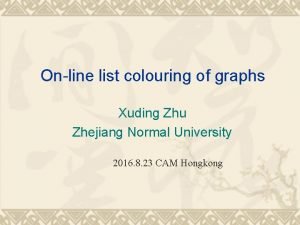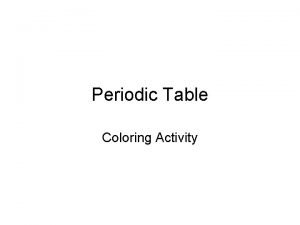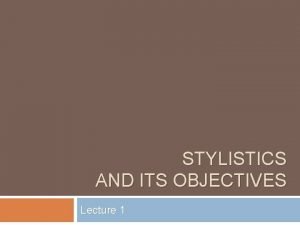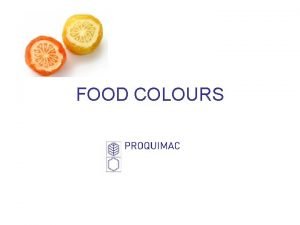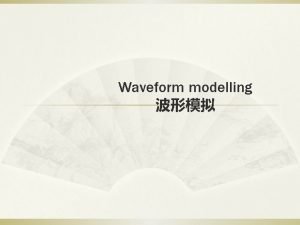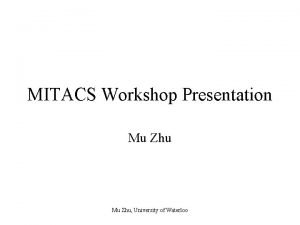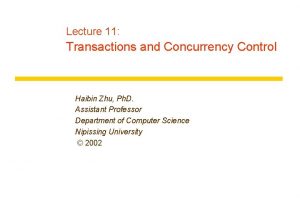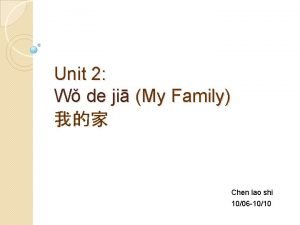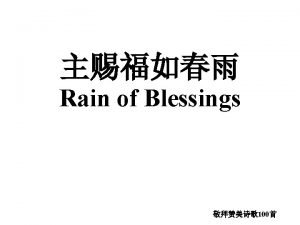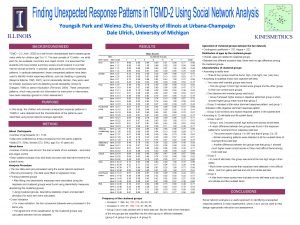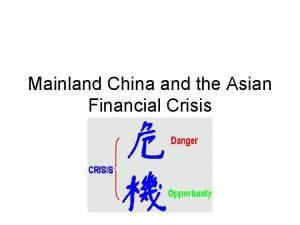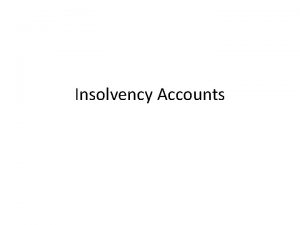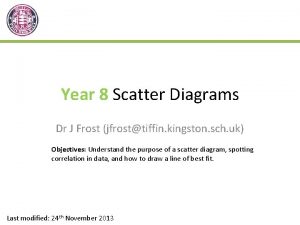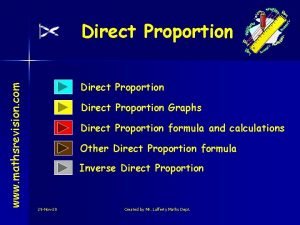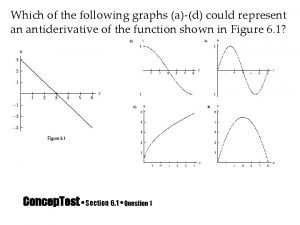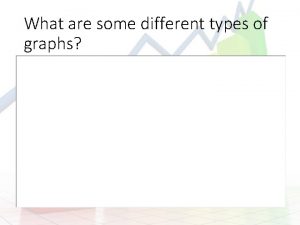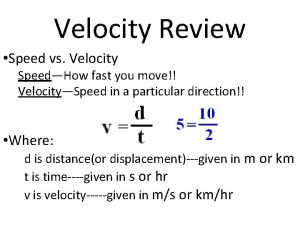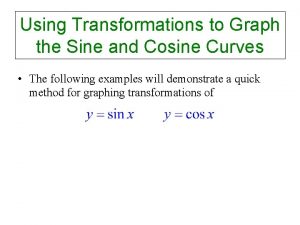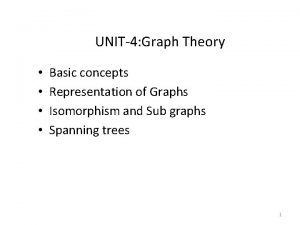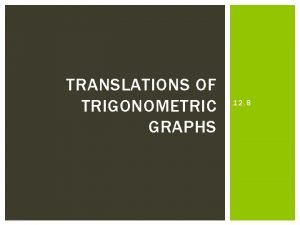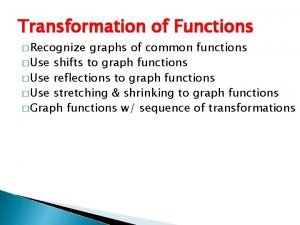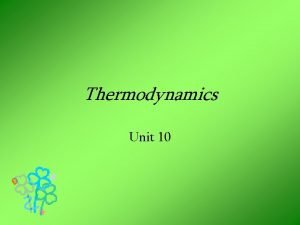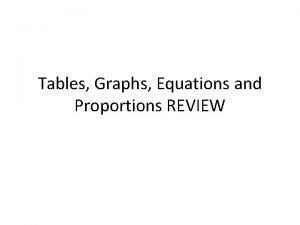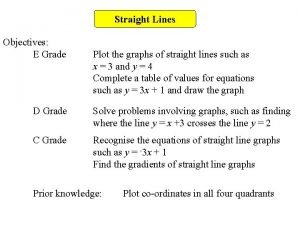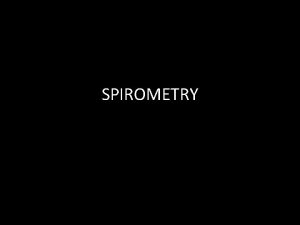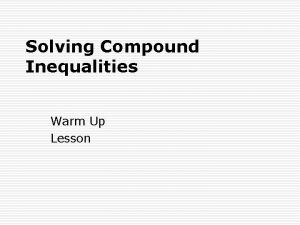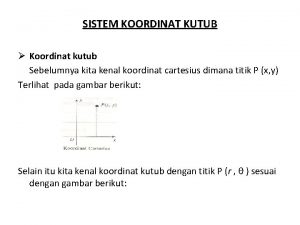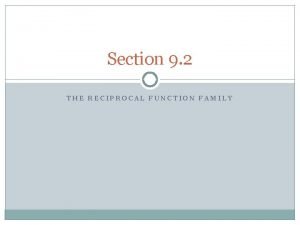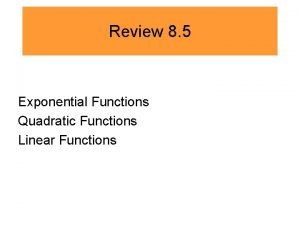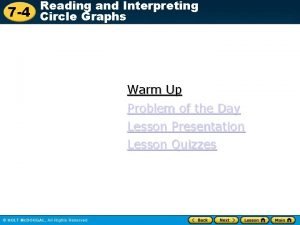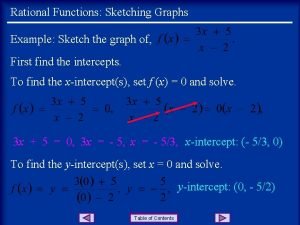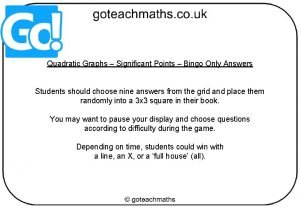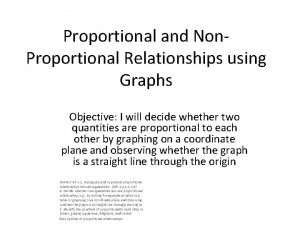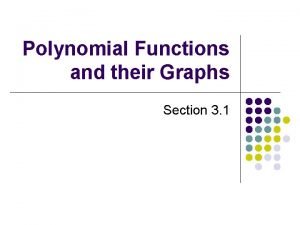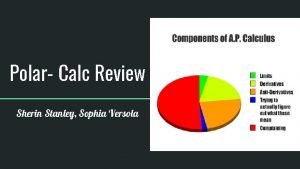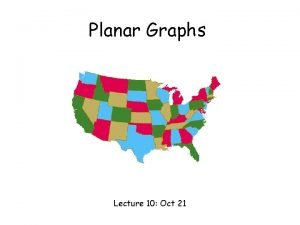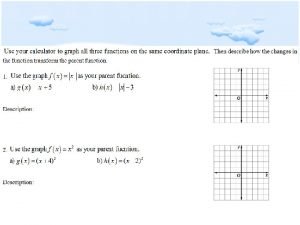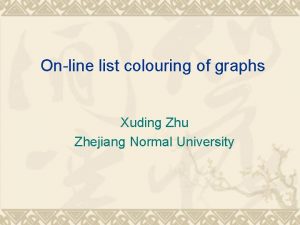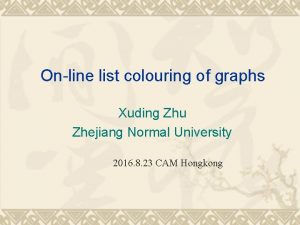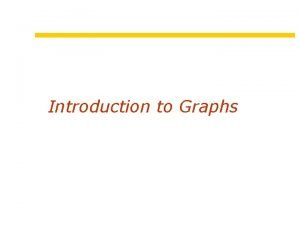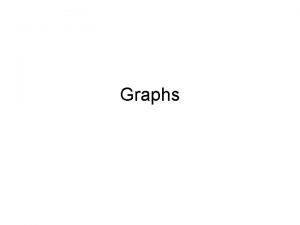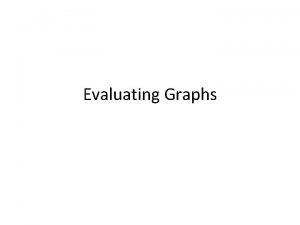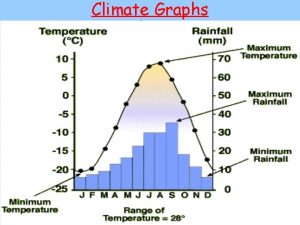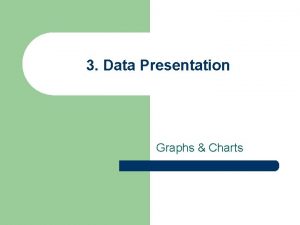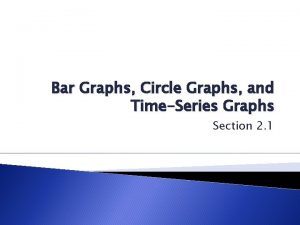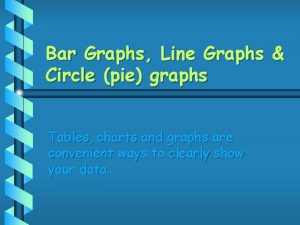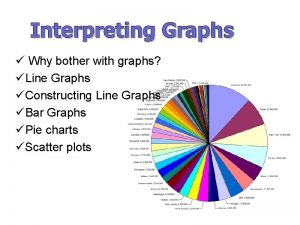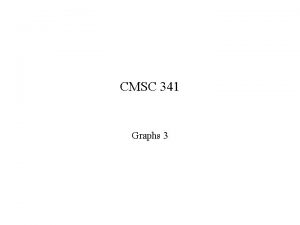Online list colouring of graphs Xuding Zhu Zhejiang



















![is not 2 -paintable Theorem [Erdos-Rubin-Taylor (1979)] is 2 -choosable. is not 2 -paintable Theorem [Erdos-Rubin-Taylor (1979)] is 2 -choosable.](https://slidetodoc.com/presentation_image/4a2991cf492ee749a121d12e3bb6bf53/image-20.jpg)

![Theorem [Erdos-Rubin-Taylor, 1979] A connected graph G is 2 -choosable if and only if Theorem [Erdos-Rubin-Taylor, 1979] A connected graph G is 2 -choosable if and only if](https://slidetodoc.com/presentation_image/4a2991cf492ee749a121d12e3bb6bf53/image-22.jpg)


![Complete bipartite graphs Theorem [Erdos, 1964] probabilistic proof Theorem[Zhu, 2009] If G is bipartite Complete bipartite graphs Theorem [Erdos, 1964] probabilistic proof Theorem[Zhu, 2009] If G is bipartite](https://slidetodoc.com/presentation_image/4a2991cf492ee749a121d12e3bb6bf53/image-25.jpg)




![and Theorem Erdos-Lovasz [Radha. Krishnan-Srinivasan, 2000] Conjecture Theorem [Erdos, 1964] and Theorem Erdos-Lovasz [Radha. Krishnan-Srinivasan, 2000] Conjecture Theorem [Erdos, 1964]](https://slidetodoc.com/presentation_image/4a2991cf492ee749a121d12e3bb6bf53/image-30.jpg)
![and Theorem Erdos-Lovasz [Radha. Krishnan-Srinivasan, 2000] Conjecture Theorem [Erdos, 1964] The proof uses a and Theorem Erdos-Lovasz [Radha. Krishnan-Srinivasan, 2000] Conjecture Theorem [Erdos, 1964] The proof uses a](https://slidetodoc.com/presentation_image/4a2991cf492ee749a121d12e3bb6bf53/image-31.jpg)
![and Theorem Erdos-Lovasz [Radha. Krishnan-Srinivasan, 2000] Conjecture Theorem [Erdos, 1964] Theorem [Duray-Gutowski-Kozik, 2015] Corollary and Theorem Erdos-Lovasz [Radha. Krishnan-Srinivasan, 2000] Conjecture Theorem [Erdos, 1964] Theorem [Duray-Gutowski-Kozik, 2015] Corollary](https://slidetodoc.com/presentation_image/4a2991cf492ee749a121d12e3bb6bf53/image-32.jpg)


![Fact: Conjecture [Albertson]: Conjecture [Zhu, 2009]: Fact: Conjecture [Albertson]: Conjecture [Zhu, 2009]:](https://slidetodoc.com/presentation_image/4a2991cf492ee749a121d12e3bb6bf53/image-35.jpg)
![Theorem [Wong-Zhu, 2013] Conjecture [Zhu, 2009]: Proof: Derandomize a probabilistic argument Theorem [Wong-Zhu, 2013] Conjecture [Zhu, 2009]: Proof: Derandomize a probabilistic argument](https://slidetodoc.com/presentation_image/4a2991cf492ee749a121d12e3bb6bf53/image-36.jpg)


![Theorem [Alon-Tuza-Voigt, 1997] Infimum attained Probabilistic arguemnt [Gutowski, 2011] Infimum not attained Theorem [Alon-Tuza-Voigt, 1997] Infimum attained Probabilistic arguemnt [Gutowski, 2011] Infimum not attained](https://slidetodoc.com/presentation_image/4a2991cf492ee749a121d12e3bb6bf53/image-39.jpg)






![Upper bounds for ch(G) proved by induction Planar graphs [ Schauz, 2009 ] Every Upper bounds for ch(G) proved by induction Planar graphs [ Schauz, 2009 ] Every](https://slidetodoc.com/presentation_image/4a2991cf492ee749a121d12e3bb6bf53/image-46.jpg)





![Theorem [Kim-Kwon-Liu-Zhu, 2012] For k>1, is not (k+1)-paintable. Theorem [Kim-Kwon-Liu-Zhu, 2012] For k>1, is not (k+1)-paintable.](https://slidetodoc.com/presentation_image/4a2991cf492ee749a121d12e3bb6bf53/image-52.jpg)


![Theorem [Kozik-Micek-Zhu, 2014] On-line Ohba conjecture is true for graphs with independence number at Theorem [Kozik-Micek-Zhu, 2014] On-line Ohba conjecture is true for graphs with independence number at](https://slidetodoc.com/presentation_image/4a2991cf492ee749a121d12e3bb6bf53/image-55.jpg)



![Theorem [Kozik-Micek-Zhu, 2014] On-line Ohba conjecture is true for graphs with independence number at Theorem [Kozik-Micek-Zhu, 2014] On-line Ohba conjecture is true for graphs with independence number at](https://slidetodoc.com/presentation_image/4a2991cf492ee749a121d12e3bb6bf53/image-59.jpg)

![Questions Theorem [ , , 1999] Planar graphs are 2 -defect 3 -choosable. paintable Questions Theorem [ , , 1999] Planar graphs are 2 -defect 3 -choosable. paintable](https://slidetodoc.com/presentation_image/4a2991cf492ee749a121d12e3bb6bf53/image-61.jpg)





![Theorem [Galvin, 1995] If G is bipartite, then Theorem [Galvin, 1995] If G is bipartite, then](https://slidetodoc.com/presentation_image/4a2991cf492ee749a121d12e3bb6bf53/image-67.jpg)

![Theorem [Frieze, Mitsche, Perez-Gimenez, Pralat, 2015] Theorem [Frieze, Mitsche, Perez-Gimenez, Pralat, 2015]](https://slidetodoc.com/presentation_image/4a2991cf492ee749a121d12e3bb6bf53/image-69.jpg)
![Theorem [Frieze, Mitsche, Perez-Gimenez, Pralat, 2015] Theorem [Frieze, Mitsche, Perez-Gimenez, Pralat, 2015]](https://slidetodoc.com/presentation_image/4a2991cf492ee749a121d12e3bb6bf53/image-70.jpg)









![Theorem [Huang-Wong-Zhu, 2011] is k-paintable = deg(P(G)) Theorem [Huang-Wong-Zhu, 2011] is k-paintable = deg(P(G))](https://slidetodoc.com/presentation_image/4a2991cf492ee749a121d12e3bb6bf53/image-80.jpg)
![Theorem [Huang-Wong-Zhu, 2011] is k-paintable Theorem [Huang-Wong-Zhu, 2011] is k-paintable](https://slidetodoc.com/presentation_image/4a2991cf492ee749a121d12e3bb6bf53/image-81.jpg)

![Theorem [Mahoney, Tomlinson Wise, 2014] If G is an outerplanar graph whose weak dual Theorem [Mahoney, Tomlinson Wise, 2014] If G is an outerplanar graph whose weak dual](https://slidetodoc.com/presentation_image/4a2991cf492ee749a121d12e3bb6bf53/image-83.jpg)
- Slides: 83

On-line list colouring of graphs Xuding Zhu Zhejiang Normal University 2016. 8. 23 CAM Hongkong

A scheduling problem: There are six basketball teams, each needs to compete with all the others. Each team can play one game per day How many days are needed to schedule all the games? Answer: 5 days

1 st day

2 nd day

3 rd day

4 th day

5 th day

This is an edge colouring problem. Each edge is a game. Each day is a colour.

A scheduling problem: There are six basketball teams, each needs to compete with all the others. Each team can play one game per day Each team can choose one day off How many days are needed to schedule all the games? Answer: 5 days 7 days are enough 7 days are needed

There are 7 colours Edge list colouring Each edge misses at most 2 colours Each edge has 5 permissible colours I do not know any easy proof

List colouring conjecture: For any graph G, However, the conjecture remains open for Haggkvist-Janssen (1997) Uwe Schauz (2014)

A scheduling problem There are six teams, each needs to compete with all the others. Each team can play one game per day Each team can choose one day off How many days are needed to schedule all the games? Answer: 5 days 7 days are enough The choices are made before the scheduling

A scheduling problem There are six teams, each needs to compete with all the others. Each team can play one game per day is allowed not day to show Each team can choose one off up for one day How many days are needed to schedule all the games? On each day, we know which teams haven’t shown up today 7 days are enough but we do not know which teams will not show up tomorrow We need to schedule the games for today

On-line list colouring of graphs We start colouring the graph before having the full information of the list

is the number of permissible colours for x f-painting game (on-line list colouring game) on G Each vertex v is given f(v) tokens. Each token represents a permissible colour. But we do not know yet what is the colour. Two Players: Lister Reveals the list Painter Colours vertices

At round i Lister choose a set of uncoloured vertices, removes one token from each vertex of is the set of vertices which has colour i as a permissible colour. Painter chooses an independent subset vertices in are coloured by colour i. of

If at the end of some round, there is an uncolored vertex with no tokens left, then Lister wins. If all vertices are coloured then Painter wins the game.

G is f-paintable if Painter has a winning strategy for the f-painting game. G is k-paintable if G is f-paintable for f(x)=k for every x. The paint number of G is the minimum k for which G is k-paintable.

On-line List colouring: list colouring: Painter start colouring the graph after having the full information of the list before choice number
![is not 2 paintable Theorem ErdosRubinTaylor 1979 is 2 choosable is not 2 -paintable Theorem [Erdos-Rubin-Taylor (1979)] is 2 -choosable.](https://slidetodoc.com/presentation_image/4a2991cf492ee749a121d12e3bb6bf53/image-20.jpg)
is not 2 -paintable Theorem [Erdos-Rubin-Taylor (1979)] is 2 -choosable.

is not 2 -paintable Lister wins the game
![Theorem ErdosRubinTaylor 1979 A connected graph G is 2 choosable if and only if Theorem [Erdos-Rubin-Taylor, 1979] A connected graph G is 2 -choosable if and only if](https://slidetodoc.com/presentation_image/4a2991cf492ee749a121d12e3bb6bf53/image-22.jpg)
Theorem [Erdos-Rubin-Taylor, 1979] A connected graph G is 2 -choosable if and only if its core is or However, if p>1, then or is not 2 -paintable. Theorem [Zhu, 2009] A connected graph G is 2 -paintable if and only if its core is or or

Problems studied Planar graphs and locally planar graphs Chromatic-paintable graphs Complete bipartite graphs Random graphs Partial painting game b-tuple painting game and fractional paint number Defective painting game Sum-painting number of graphs

Methods: 1. Derandomize probability arguments 2. Polynomial method 3. Inductive proof 4. Kernel method 5. Probability
![Complete bipartite graphs Theorem Erdos 1964 probabilistic proof TheoremZhu 2009 If G is bipartite Complete bipartite graphs Theorem [Erdos, 1964] probabilistic proof Theorem[Zhu, 2009] If G is bipartite](https://slidetodoc.com/presentation_image/4a2991cf492ee749a121d12e3bb6bf53/image-25.jpg)
Complete bipartite graphs Theorem [Erdos, 1964] probabilistic proof Theorem[Zhu, 2009] If G is bipartite and has n vertices, then

A B Probability proof: Each color is assigned to vertices in A or B with probability

Initially, each vertex x has weight w(x)=1 A Assume Lister has given set If Painter colours , double the weight of each vertex in B

The total weight of uncoloured vertices is not increased. A B If a vertex is given a permissible colour but is not coloured by that colour, then its weight doubles. If x has been given k permissible colours, but remains uncoloured, then If x has able to colour it. permissible colours, Painter will be

Initially, each vertex x has weight w(x)=1 A Assume Lister has given set B If Painter colours , double the weight of each vertex in
![and Theorem ErdosLovasz Radha KrishnanSrinivasan 2000 Conjecture Theorem Erdos 1964 and Theorem Erdos-Lovasz [Radha. Krishnan-Srinivasan, 2000] Conjecture Theorem [Erdos, 1964]](https://slidetodoc.com/presentation_image/4a2991cf492ee749a121d12e3bb6bf53/image-30.jpg)
and Theorem Erdos-Lovasz [Radha. Krishnan-Srinivasan, 2000] Conjecture Theorem [Erdos, 1964]
![and Theorem ErdosLovasz Radha KrishnanSrinivasan 2000 Conjecture Theorem Erdos 1964 The proof uses a and Theorem Erdos-Lovasz [Radha. Krishnan-Srinivasan, 2000] Conjecture Theorem [Erdos, 1964] The proof uses a](https://slidetodoc.com/presentation_image/4a2991cf492ee749a121d12e3bb6bf53/image-31.jpg)
and Theorem Erdos-Lovasz [Radha. Krishnan-Srinivasan, 2000] Conjecture Theorem [Erdos, 1964] The proof uses a probability argument. The argument CANNOT be derandomized to give a strategy for the painting game.
![and Theorem ErdosLovasz Radha KrishnanSrinivasan 2000 Conjecture Theorem Erdos 1964 Theorem DurayGutowskiKozik 2015 Corollary and Theorem Erdos-Lovasz [Radha. Krishnan-Srinivasan, 2000] Conjecture Theorem [Erdos, 1964] Theorem [Duray-Gutowski-Kozik, 2015] Corollary](https://slidetodoc.com/presentation_image/4a2991cf492ee749a121d12e3bb6bf53/image-32.jpg)
and Theorem Erdos-Lovasz [Radha. Krishnan-Srinivasan, 2000] Conjecture Theorem [Erdos, 1964] Theorem [Duray-Gutowski-Kozik, 2015] Corollary

Some other results proved by derandomizing probabilistic arguments 1: Partial online list colouring

Partial painting game Partial f-painting game on G same as the f-painting game, except that Painter’s goal is not to colour all the vertices, but to colour as many vertices as possible.
![Fact Conjecture Albertson Conjecture Zhu 2009 Fact: Conjecture [Albertson]: Conjecture [Zhu, 2009]:](https://slidetodoc.com/presentation_image/4a2991cf492ee749a121d12e3bb6bf53/image-35.jpg)
Fact: Conjecture [Albertson]: Conjecture [Zhu, 2009]:
![Theorem WongZhu 2013 Conjecture Zhu 2009 Proof Derandomize a probabilistic argument Theorem [Wong-Zhu, 2013] Conjecture [Zhu, 2009]: Proof: Derandomize a probabilistic argument](https://slidetodoc.com/presentation_image/4a2991cf492ee749a121d12e3bb6bf53/image-36.jpg)
Theorem [Wong-Zhu, 2013] Conjecture [Zhu, 2009]: Proof: Derandomize a probabilistic argument

Some other results proved by derandomizing probabilistic arguments 1: Partial online list colouring 2. Fractional online choice number

b-tuple list colouring G is (a, b)-choosable if |L(v)|=a for each vertex v, then there is a b-tuple L-colouring. b-tuple on-line list colouring If each vertex has a tokens, then Painter has a strategy to colour each vertex a set of b colours.
![Theorem AlonTuzaVoigt 1997 Infimum attained Probabilistic arguemnt Gutowski 2011 Infimum not attained Theorem [Alon-Tuza-Voigt, 1997] Infimum attained Probabilistic arguemnt [Gutowski, 2011] Infimum not attained](https://slidetodoc.com/presentation_image/4a2991cf492ee749a121d12e3bb6bf53/image-39.jpg)
Theorem [Alon-Tuza-Voigt, 1997] Infimum attained Probabilistic arguemnt [Gutowski, 2011] Infimum not attained

Methods: 1. Derandomize probability arguments 2. Polynomial method

paintable = deg(P(G))

Some results proved by using polynomial method

Haggkvist-Janssen (1997) Uwe Schauz (2014)

Methods: 1. Derandomize probability arguments 2. Polynomial method 3. Inductive proof

A recursive definition of f-paintable Assume (1) (2) . Then G is f-paintable, if or
![Upper bounds for chG proved by induction Planar graphs Schauz 2009 Every Upper bounds for ch(G) proved by induction Planar graphs [ Schauz, 2009 ] Every](https://slidetodoc.com/presentation_image/4a2991cf492ee749a121d12e3bb6bf53/image-46.jpg)
Upper bounds for ch(G) proved by induction Planar graphs [ Schauz, 2009 ] Every planar graph is 5 -choosable Theorem [Thomassen, 1995] paintable

embedded in a surface non-contractible edge-width of G length of shortest non-contractible cycle contractible Locally planar edge-width is large Theorem [Thomassen, 1993] For any surface , there is a constant , any G embedded in with edge-width > is 5 -colourable.

embedded in a surface non-contractible edge-width of G length of shortest non-contractible cycle contractible Locally planar edge-width is large Han-Zhu De. Vos-Kawarabayashi-Mohor 2015 2008 Theorem [Thomassen, 1993] For any surface , there is a constant , any G embedded in with edge-width > is 5 -colourable. choosable paintable

Chromatic-paintable graphs

A graph G is chromatic choosable paintable if Conjecture: Line graphs are chromatic choosable. paintable Conjecture: Claw-free graphs are chromatic choosable. paintable Conjecture: Total graphs are chromatic choosable. paintable [Kim-Park, 2013] Conjecture: Graph squares are chromatic choosable. Theorem Ohba Conjecture: Graphs G with [Noel-Reed-Wu, 2013] are chromatic choosable. paintable

A graph G is chromatic choosable paintable if Conjecture: Line graphs are chromatic choosable. paintable Conjecture: Claw-free graphs are chromatic choosable. paintable Conjecture: Total graphs are chromatic choosable. paintable [Kim-Park, 2013] Conjecture: Graph squares are chromatic choosable. Ohba Conjecture: Graphs G with Question are chromatic choosable. paintable NO!
![Theorem KimKwonLiuZhu 2012 For k1 is not k1paintable Theorem [Kim-Kwon-Liu-Zhu, 2012] For k>1, is not (k+1)-paintable.](https://slidetodoc.com/presentation_image/4a2991cf492ee749a121d12e3bb6bf53/image-52.jpg)
Theorem [Kim-Kwon-Liu-Zhu, 2012] For k>1, is not (k+1)-paintable.

is not 3 -paintable.

On-line version Huang-Wong-Zhu 2011 Ohba Conjecture: Graphs G with are chromatic choosable. paintable To prove this conjecture, we only need to consider complete multipartite graphs.
![Theorem KozikMicekZhu 2014 Online Ohba conjecture is true for graphs with independence number at Theorem [Kozik-Micek-Zhu, 2014] On-line Ohba conjecture is true for graphs with independence number at](https://slidetodoc.com/presentation_image/4a2991cf492ee749a121d12e3bb6bf53/image-55.jpg)
Theorem [Kozik-Micek-Zhu, 2014] On-line Ohba conjecture is true for graphs with independence number at most 3. The key in proving this theorem is to find a “good” technical statement that can be proved by induction.

ordered Partition of the parts into four classes

ordered

G is f-paintable
![Theorem KozikMicekZhu 2014 Online Ohba conjecture is true for graphs with independence number at Theorem [Kozik-Micek-Zhu, 2014] On-line Ohba conjecture is true for graphs with independence number at](https://slidetodoc.com/presentation_image/4a2991cf492ee749a121d12e3bb6bf53/image-59.jpg)
Theorem [Kozik-Micek-Zhu, 2014] On-line Ohba conjecture is true for graphs with independence number at most 3. Theorem [Chang-Chen-Guo-Huang, 2014+]

d-defective painting game At round i Lister choose a set of uncoloured vertices, removes one token from each vertex of is the set of vertices which has colour i as a permissible colour. Painter chooses aansubset independent Painter of subset vertices in are coloured by colour i. of
![Questions Theorem 1999 Planar graphs are 2 defect 3 choosable paintable Questions Theorem [ , , 1999] Planar graphs are 2 -defect 3 -choosable. paintable](https://slidetodoc.com/presentation_image/4a2991cf492ee749a121d12e3bb6bf53/image-61.jpg)
Questions Theorem [ , , 1999] Planar graphs are 2 -defect 3 -choosable. paintable ? No! Gutowski-Han-Krawczyk-Zhu, 2016 paintable ? Yes! Han-Zhu, 2015 Theorem [Cushing-Kierstead, 2010] Planar graphs are 1 -defect 4 -choosable. paintable ? Open

Han-Zhu 2015 Locally planar graphs are 2 -defective 4 -paintable.

Methods: 1. Derandomize probability arguments 2. Polynomial method 3. Inductive proof 4. Kernel method

Let D be an orientation of G. A kernel in D is an independent set I for which every vertex not in I has an out-neighbour in I D I

A directed graph D is kernel perfect if every induced sub-digraph has a kernel. Theorem If G has an orientation D which is kernel perfect,

An example:
![Theorem Galvin 1995 If G is bipartite then Theorem [Galvin, 1995] If G is bipartite, then](https://slidetodoc.com/presentation_image/4a2991cf492ee749a121d12e3bb6bf53/image-67.jpg)
Theorem [Galvin, 1995] If G is bipartite, then

Methods: 1. Derandomize probability arguments 2. Polynomial method 3. Inductive proof 4. Kernel method 5. Probability
![Theorem Frieze Mitsche PerezGimenez Pralat 2015 Theorem [Frieze, Mitsche, Perez-Gimenez, Pralat, 2015]](https://slidetodoc.com/presentation_image/4a2991cf492ee749a121d12e3bb6bf53/image-69.jpg)
Theorem [Frieze, Mitsche, Perez-Gimenez, Pralat, 2015]
![Theorem Frieze Mitsche PerezGimenez Pralat 2015 Theorem [Frieze, Mitsche, Perez-Gimenez, Pralat, 2015]](https://slidetodoc.com/presentation_image/4a2991cf492ee749a121d12e3bb6bf53/image-70.jpg)
Theorem [Frieze, Mitsche, Perez-Gimenez, Pralat, 2015]

At each round, if Lister presents a large set M, then we are sure that M contains a large independent set I. Painter colours I. If Lister presents a small set M, then Painter randomly colours one vertex from the set.

Nine Dragon Tree Thank you

Lister 33 33 333

Lister 33 33 333 Painter 3 23 23 33

Lister 33 33 333 Painter 3 23 23 33 Lister

Lister 33 33 333 Painter 3 23 23 33 Lister

Lister 33 33 333 Painter 3 23 23 33 Lister Painter 13 222 2 3 222 3 13 22

Lister 33 33 333 Painter 3 23 23 33 Lister Painter 13 222 2 3 222 3 13 22 Lister

Lister 33 33 333 is not 3 -paintable Painter 3 23 23 33 Lister Painter 13 222 2 3 222 3 13 22 Lister Painter Lose 3 {123} 111 {1}{2}{3} 2 112 Painter Lose 2 3 11 Painter Lose
![Theorem HuangWongZhu 2011 is kpaintable degPG Theorem [Huang-Wong-Zhu, 2011] is k-paintable = deg(P(G))](https://slidetodoc.com/presentation_image/4a2991cf492ee749a121d12e3bb6bf53/image-80.jpg)
Theorem [Huang-Wong-Zhu, 2011] is k-paintable = deg(P(G))
![Theorem HuangWongZhu 2011 is kpaintable Theorem [Huang-Wong-Zhu, 2011] is k-paintable](https://slidetodoc.com/presentation_image/4a2991cf492ee749a121d12e3bb6bf53/image-81.jpg)
Theorem [Huang-Wong-Zhu, 2011] is k-paintable

![Theorem Mahoney Tomlinson Wise 2014 If G is an outerplanar graph whose weak dual Theorem [Mahoney, Tomlinson Wise, 2014] If G is an outerplanar graph whose weak dual](https://slidetodoc.com/presentation_image/4a2991cf492ee749a121d12e3bb6bf53/image-83.jpg)
Theorem [Mahoney, Tomlinson Wise, 2014] If G is an outerplanar graph whose weak dual is a path, then G is online sum choice greedy. Conjecture [Mahoney, Tolinson, Wise] Every outerplanar graph is online sum choice greedy.
 Xuding zhu
Xuding zhu Kaizen meaning
Kaizen meaning Coloring the periodic table activity
Coloring the periodic table activity Periodic table coloring activity
Periodic table coloring activity Branches of stylistics
Branches of stylistics Vibrio cholerae
Vibrio cholerae Colours e100
Colours e100 External monophasic liquid dosage form
External monophasic liquid dosage form Encoding bugs in software testing
Encoding bugs in software testing Speed and velocity
Speed and velocity Graphs that enlighten and graphs that deceive
Graphs that enlighten and graphs that deceive 5-3 practice polynomial functions
5-3 practice polynomial functions Shilin zhu
Shilin zhu Lupei zhu
Lupei zhu Zhe yi sheng zui mei de zhu fu lyrics
Zhe yi sheng zui mei de zhu fu lyrics Kerry zhu
Kerry zhu The code and fix model
The code and fix model Ye qiu
Ye qiu Axing zhu
Axing zhu Mitacs waterloo
Mitacs waterloo Zhu han
Zhu han Haibin zhu
Haibin zhu Shaofei zhu
Shaofei zhu Xianli zhu
Xianli zhu Zhu shi
Zhu shi Zhu en
Zhu en Zhù nǐ shēng rì kuài lè
Zhù nǐ shēng rì kuài lè Alae vs ulae
Alae vs ulae Dou mei zhu
Dou mei zhu Kerry zhu
Kerry zhu Zhu
Zhu Dou mei zhu
Dou mei zhu Haikun zhu
Haikun zhu Shenghuo zhu
Shenghuo zhu Umbc mechanical engineering
Umbc mechanical engineering Zhu
Zhu Zhu
Zhu The region yu wo
The region yu wo Weimo zhu
Weimo zhu Hongyi zhu
Hongyi zhu Zhu rongji
Zhu rongji Edward zhu
Edward zhu Kerry zhu
Kerry zhu Axiomatic structure
Axiomatic structure Singly vs doubly linked list
Singly vs doubly linked list Introduction to linked list
Introduction to linked list List h shows account.
List h shows account. Perbedaan single linked list dan double linked list
Perbedaan single linked list dan double linked list Select list item list index too large
Select list item list index too large Dr j frost
Dr j frost Direct ratio formula
Direct ratio formula Which of the following graphs are identical?
Which of the following graphs are identical? Different types of graph
Different types of graph Constant speed graph
Constant speed graph Graph transformations
Graph transformations Incident matrix in graph theory
Incident matrix in graph theory Zczc state graph
Zczc state graph Perfect competition side by side graphs
Perfect competition side by side graphs Cho sha cao
Cho sha cao 12-8 translations of trigonometric graphs answers
12-8 translations of trigonometric graphs answers Vertical stretch or shrink
Vertical stretch or shrink Endothermic vs exothermic graphs
Endothermic vs exothermic graphs Find the constant of proportionality
Find the constant of proportionality Symmetry test for polar graphs
Symmetry test for polar graphs Plotting straight line graphs tes
Plotting straight line graphs tes Spirometry graphs
Spirometry graphs Solving systems using tables and graphs
Solving systems using tables and graphs How to solve a compound inequality
How to solve a compound inequality Polar curves examples
Polar curves examples Reciprocal function family
Reciprocal function family Is a parabola linear or exponential
Is a parabola linear or exponential Interpreting circle graphs
Interpreting circle graphs Rational graphs
Rational graphs Quadratic graphs roots and turning points
Quadratic graphs roots and turning points Quadratic graphs worksheet
Quadratic graphs worksheet Proportional and non proportional
Proportional and non proportional Graphs of hyperbolic functions
Graphs of hyperbolic functions Positive velocity and negative acceleration graph
Positive velocity and negative acceleration graph Plolynomials
Plolynomials Convex limacon
Convex limacon Euler's formula for planar graphs
Euler's formula for planar graphs Phantom graphs
Phantom graphs Satisfaction graph
Satisfaction graph 7 parent functions
7 parent functions
